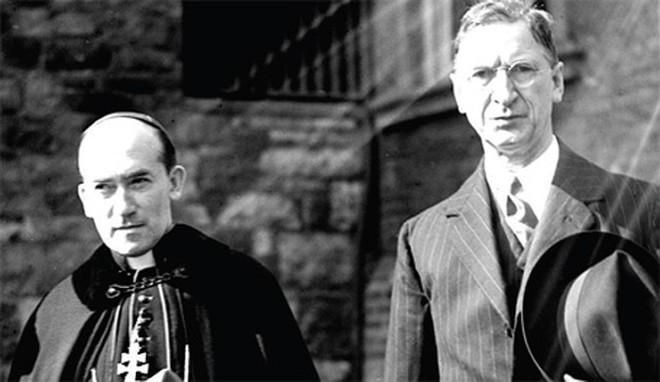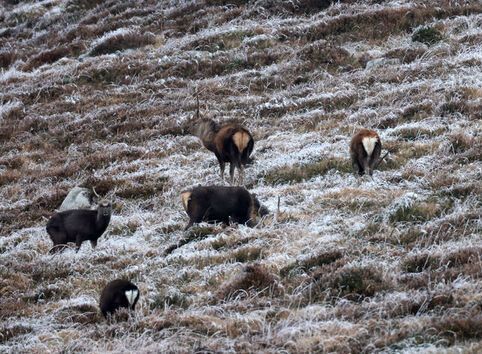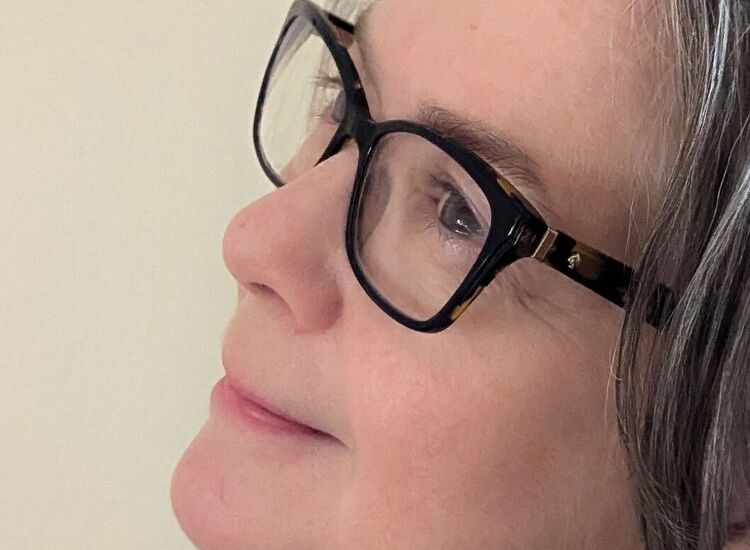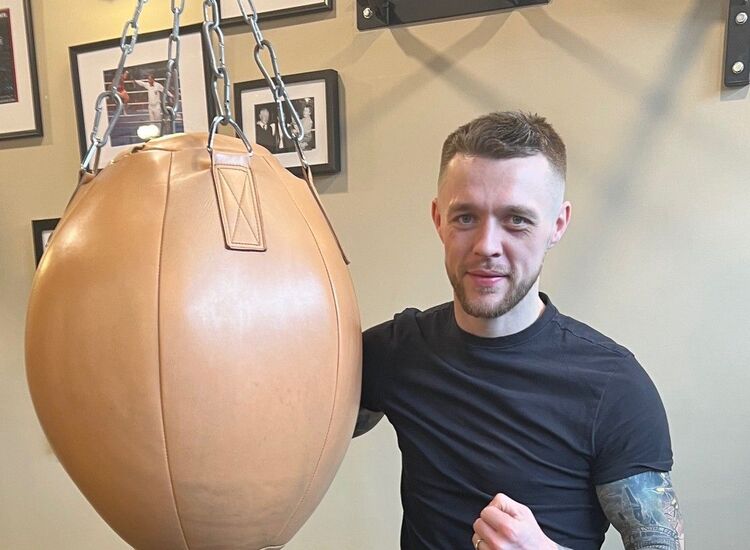In 1940, the year I was born, John Charles McQuaid was appointed archbishop of Dublin and presided in that role until his death in 1972. As a result, Ireland and my family were subjected to the virulently anti-Protestant McQuaid’s decrees on interfaith relationships. Catholics were forbidden to attend non-Catholic weddings or funerals. A Catholic who wanted to marry a Protestant had to receive the local bishop’s approval to do so. His consent might be granted if both parties agreed to rear their future children as Catholics. But if episcopal approval was not forthcoming and the couple married “outside the Church,” the blade of the excommunicating guillotine fell. And even when permission was given, the Church got in the last kick of disapproval by not allowing the non-Catholic partner to be buried with their spouse in a Catholic cemetery.
This is where my Aunt Theresa enters the picture. Theresa was my mother’s sister, the youngest of seven children. When I was small, she began taking me to her home in Derreen to give Mam a break from caring for four children in nappies.
Theresa lived with my granny, my granddad and my uncle. Their house was a four-roomed cottage with a galvanized roof over many layers of thatch. The outer walls were dashed with pebbled cement, and a red-blossomed rosebush grew high against the wall between the kitchen and the far bedroom window. A three-foot wall with a round capstone separated the house and its front garden from the macadamized Derreen road. A green-painted iron gate allowed for entry. The small garden was divided into triangles by miniature box hedges. The family may have been poor, but they had their pride in appearance.
Wallowing in the gentle love of Theresa and Granny, my young eyes saw their cottage as a fairy house in a storybook. But there was an adult reality of which I was unaware: Grandad and my uncle were raging alcoholics.
Theresa’s excitement can only be imagined when Jim, a friend of her brother, expressed interest in her. I remember that Jim’s lorry was sometimes parked outside the garden wall and that Theresa was missing from the house. Once, Theresa and Jim took me to a visiting carnival in the town. Jim carried me to a bumper car and let me steer. When I crashed, I hit my face on the steering wheel and got a bloody nose. Jim soothed away the pain.
On a winter’s morning when I was 14, my family was thrown into a state of great unsettlement when the news arrived that Theresa and Jim had married.
Jim was a Protestant, and he and Theresa had married in a Protestant church. To our Catholic minds, Theresa’s marrying outside the faith was bad enough. But it got worse: Theresa had converted to Protestantism. Mam had known that Jim came from a strong and dedicated Protestant family, but she had prayed for years that the couple would adhere to the Catholic marriage laws. Now that the hard news had arrived, she sat down at the kitchen table, her head in her hands, and cried. The rest of us, overcome by the news, were silent as we tried to reconcile my aunt’s situation with what we had learned in religion class. We believed Theresa would be damned to the fires of hell for all eternity.
By midday, the local priest had called on Mam, but it certainly wasn’t to comfort her. “Your sister has crucified Christ all over again,” he said. I imagine Mam winced and wailed in silence. But when Dad heard about the priest, he spat out, “Bad cess to him! He’s nothing but an ignorant jackass!”
One of Theresa’s brothers offered comfort to my mother in the only Catholic way he knew: “I will never speak to Theresa again,” he vowed. And he didn’t. Neither did he go to her funeral many years later.
Neighbors came to console Mam, but didn’t know what to say other than “I’ll pray for her.” Poor Theresa was dead to them, but she was still alive.
Before the day was over, there was talk among the local men about tarring the house of the Protestant couple who had made smooth the path for Theresa’s apostasy. It was never done.
Caught between the two religious sides, Theresa and Jim were crushed. The Catholics would not accept Jim, and the Protestants would not accept Theresa. The Catholics ostracized Theresa, while many of the Protestants were angry at Jim for not marrying one of his own. Feelings on both sides were such that the only people at Theresa’s and Jim’s wedding were the officiant and the witnesses. There was no celebratory breakfast, no one to cheer on the newlyweds, no one to catch the bouquet, no one to tie tin cans to the bumper of the getaway car and wave them off.
More than 60 years after Theresa and Jim’s nuptials, I met a man who had lived in Derreen when he was a boy. He vividly remembered the day Theresa and Jim married. “It was the talk of the town,” he said. “It was as if someone had been murdered.”
It was as if someone had been murdered. That reaction, I thought, was an expression of the depth to which the bishops had engendered fear in their people. That reaction, I thought, was what happened when Catholic children’s minds were poisoned in primary school about their Protestant neighbors. That reaction, I thought, was because John Charles McQuaid and all the Irish bishops had been using the 2,214 canon laws to serve their people. The essential Christian message was beyond their purview; to them, it was not one of love and joy, but of raw control.
Every year when we go to Ireland, my wife and I visit Theresa and Jim’s simple grave. They are buried in the Protestant section of the cemetery, separated from the Catholics by a high and wide hedge of evergreens.
Theresa and Jim were victims of the worst of times in Ireland. May they rest in peace.
Copyright © 2024 by Glanvil Enterprises, Ltd. Tom Phelan, a native of County Laois, is the author most recently of “We Were Rich and We Didn’t Know It: A Memoir of My Irish Boyhood.” For more about that and other works, including his six novels, visit his website here.








